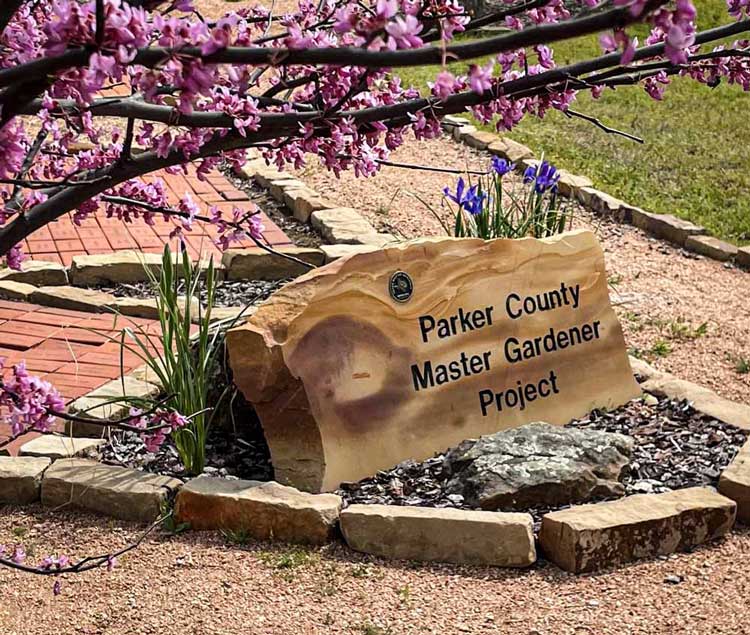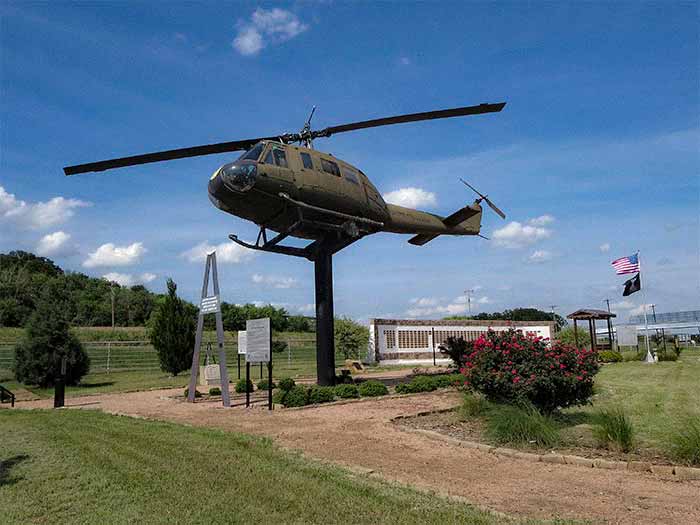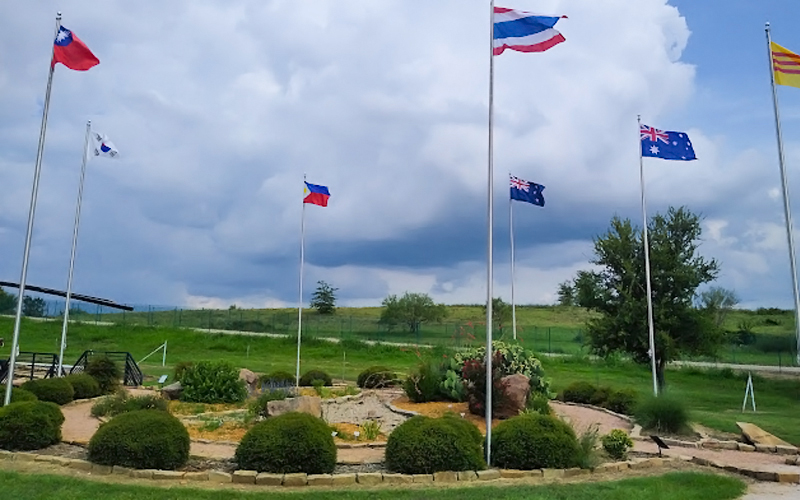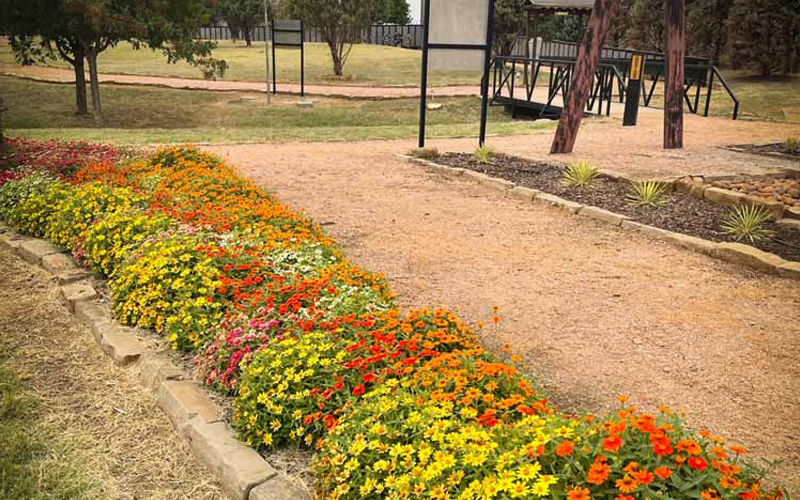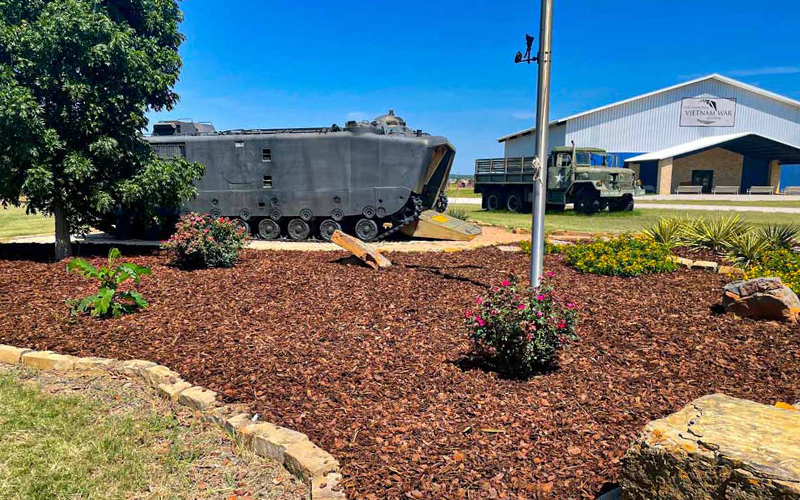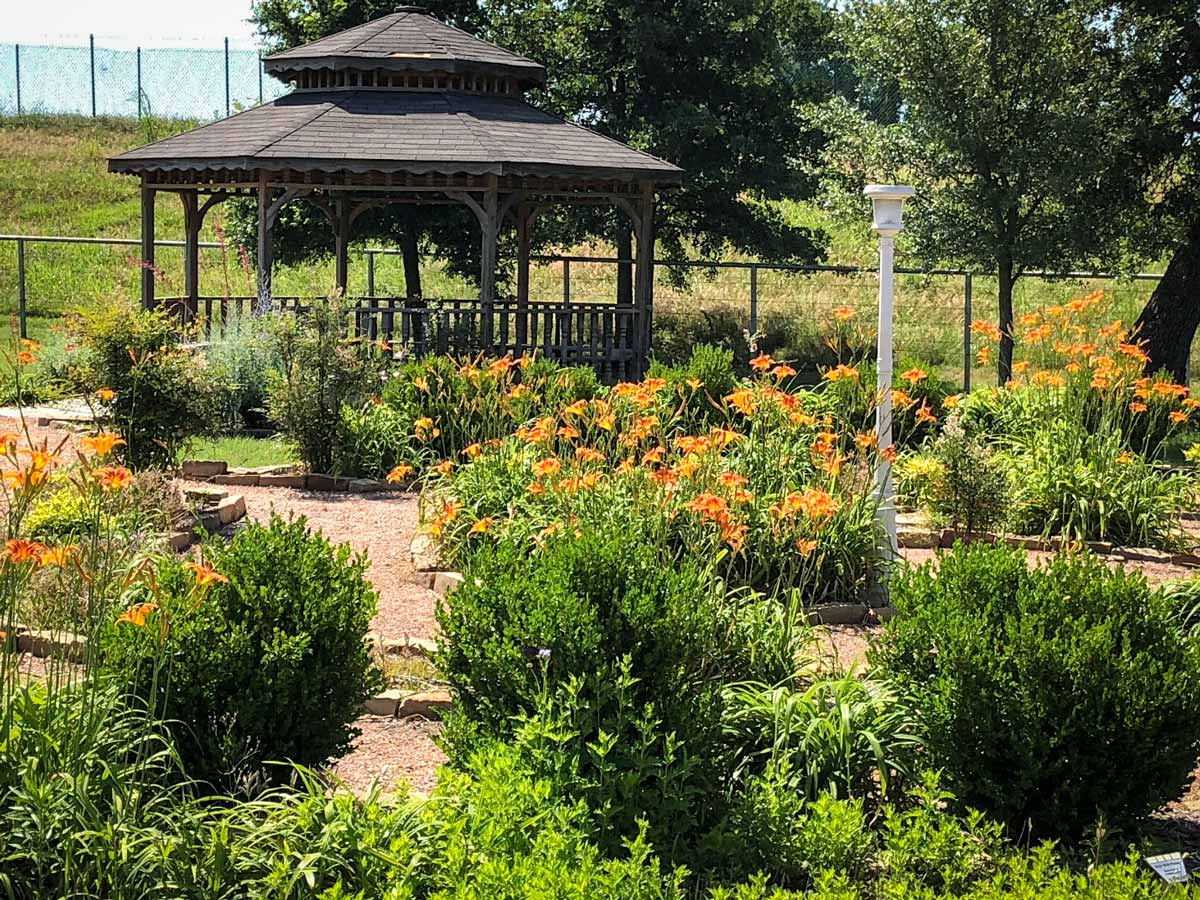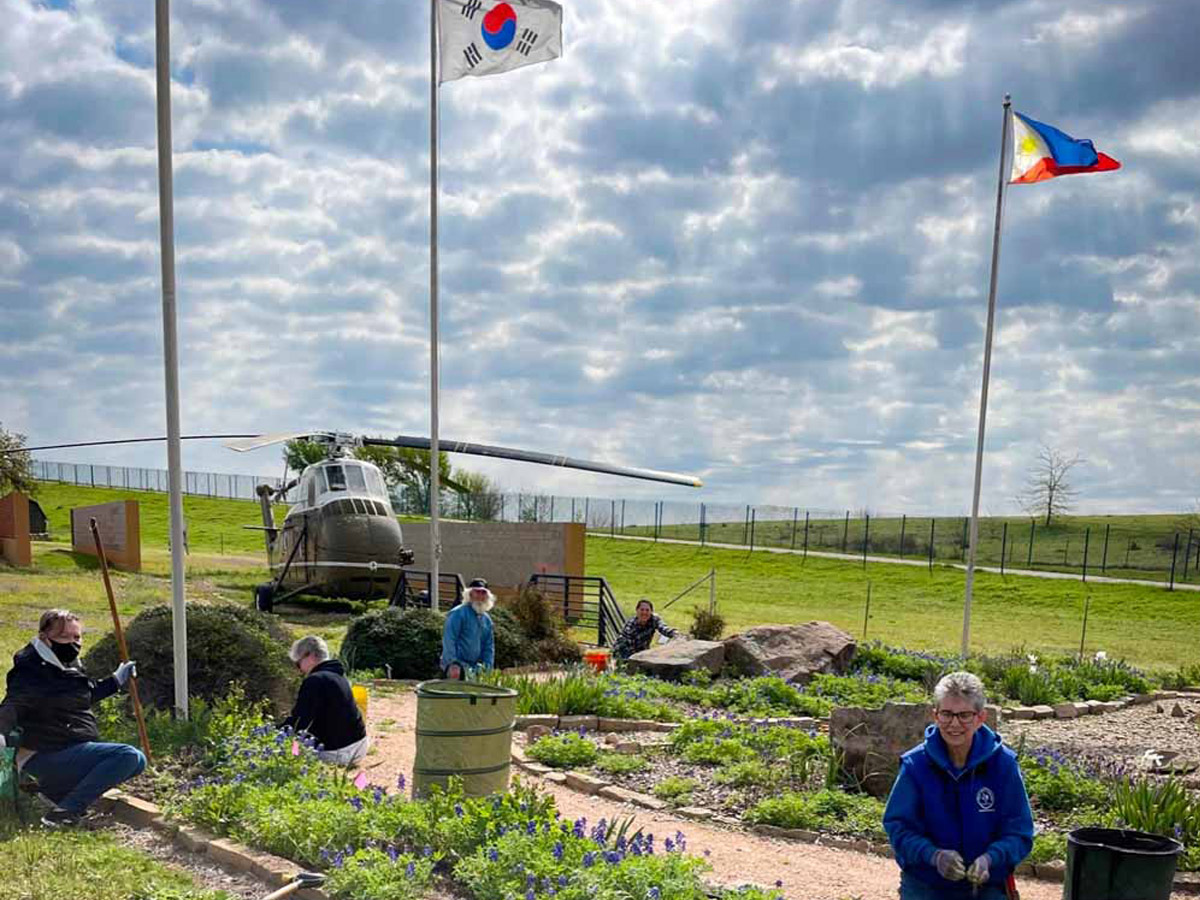The National Vietnam War Museum Gardens
The Gardens at the National Vietnam War Museum were established in 2007 to support the museum by providing a place of beauty for visitors to reflect on the history of the war. They were designed in stages by several groups of Parker County Master Gardeners.
The first garden built was the Meditation Garden. It has several pathways leading to two labyrinths that contain native and adapted plants. There are places to sit and rest, including a beautiful wooden gazebo. The pathways contain many memorial stones and bricks to honor those that fought in the war.
Projects
The Contemplation Garden was built next and features the Camp Holloway Wall, along with a very visible Huey helicopter. This wall is a replica of the original that was at the Camp Holloway headquarters in South Vietnam. The gardens include a bed designed in the shape of an “H” beneath the helicopter to designate a landing zone. Several types of roses and native grasses make up the foundations of this garden.
The Reflection Garden was designed by a young man for his Eagle Scout project. This garden includes the flags of the allies that supported the U.S. during the war. There are native and adapted plants here that survive on rainwater only (after initial establishment). There is a bridge that leads to a large helicopter that was used by the Vice President of the United States.
The Memorial Garden consists of a permanent display of a replica of the Vietnam Veterans Memorial wall located in Washington, D.C. There are large trees to provide shade and places to sit and remember those that were lost. The wall is updated after the wall in the capitol adds names for veterans that have been lost due to injury or illness that was received during the Vietnam war.
The Marine bed consists of roses and several native plants. The Navy bed contains memorials to sailors lost during the war and has native and adapted trees and plants.
Parker County Master Gardeners maintain the gardens with several workdays each month. The Gardens are open daily for visitors. The Museum is open five days a week and is located at 12685 Mineral Wells Highway.
More information is available on our website: www.NationalVnWarMuseum.org
For Additional news stories on this memorial garden: Please read this article written by Terry Evans of the National Vietnam War Museum published in the Fort Worth Star-Telegram.

